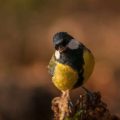Introduction to Birdwatching in the UK
Birdwatching, affectionately known as “birding,” holds a special place in British culture. Across the UK, from the rugged Scottish Highlands to the tranquil wetlands of Norfolk, enthusiasts gather year-round with binoculars and field guides in hand. What sets the UK apart for avian observation is its remarkable diversity of habitats—ancient woodlands, coastal marshes, rolling farmland, and urban parks—all offering unique opportunities to spot both resident and migratory species. Popular locations such as the RSPB reserves at Bempton Cliffs, Minsmere, and Rutland Water attract thousands of visitors eager to witness spectacular seasonal events like springtime arrivals and autumn migrations. The nation’s relatively mild climate and varied landscape ensure that there is always something new to discover throughout the year, making birdwatching a cherished pastime that appeals to novices and seasoned “twitchers” alike.
Spring: A Time for New Arrivals
As winter loosens its grip, spring in the UK signals a remarkable transformation in the birdwatching calendar. This is the season when many migratory species return from their warmer wintering grounds, bringing renewed activity to both countryside and city parks. Notably, swallows, house martins, and sand martins are among the first to arrive, often spotted skimming over rivers and lakes in pursuit of insects. Warblers such as chiffchaffs and willow warblers also make their presence known with distinctive calls from budding woodland edges.
Key Migratory Birds Returning in Spring
| Species | Where to Spot | Notable Behaviours |
|---|---|---|
| Swallow | Farmland, open countryside | Aerial feeding, mud collecting for nests |
| Chiffchaff | Woodlands, hedgerows | Signature “chiff-chaff” song, active foraging |
| Cuckoo | Heathland, woodland edges | Loud calls, searching for host nests |
Prime Habitats to Explore
The diversity of returning birds makes spring an ideal time to visit varied habitats across the UK. Wetlands like RSPB Minsmere in Suffolk and Slimbridge in Gloucestershire are hotspots for waders and ducks. Woodland reserves such as Sherwood Forest or Wytham Woods come alive with birdsong from freshly arrived warblers and tits. Coastal cliffs, especially along the Yorkshire coast or Pembrokeshire, offer opportunities to witness puffins and razorbills preparing nesting sites.
Signs of Breeding Behaviours
Keen-eyed birders will notice clear signs of breeding activity during spring. Many species engage in conspicuous courtship displays; male blackbirds sing robustly from treetops while great crested grebes perform elaborate aquatic dances on lakes. Nest-building is evident as blue tits and robins gather moss, feathers, and twigs. Egg-laying typically begins by late March or April for early breeders like song thrushes, with fledglings appearing as early as May. Observing these behaviours provides valuable insight into the lifecycle of British birds and marks one of the most engaging aspects of seasonal birdwatching.
![]()
3. Summer: Breeding Season and Coastal Spectacles
As summer arrives, the UK’s countryside and coastline burst into life with the energy of the breeding season. Many resident birds, such as robins, blackbirds, and blue tits, are busy raising their young in gardens, woodlands, and hedgerows. Their melodic dawn choruses reach their peak, filling early mornings with a symphony unique to this time of year.
One of the most remarkable summer spectacles occurs along the UK’s rugged coastlines. Seabird colonies become hives of activity as tens of thousands of birds gather to nest on cliffs and offshore islands. RSPB reserves like Bempton Cliffs in Yorkshire or Skomer Island in Wales are prime spots to witness puffins with their colourful bills, guillemots packed shoulder-to-shoulder on narrow ledges, and razorbills gliding above the waves. Kittiwakes, fulmars, and gannets also feature prominently among these bustling colonies, creating a truly awe-inspiring sight for birdwatchers.
Summer also brings several iconic seasonal visitors. Swifts scythe through city skies at breakneck speed after their long journey from Africa, while swallows and house martins swoop gracefully over meadows and water bodies in search of insects. Ospreys return to Scottish lochs and English nature reserves to fish and raise their chicks—a conservation success story that continues to inspire. With extended daylight hours and vibrant wildlife displays, summer offers some of the UK’s most memorable birdwatching opportunities.
4. Autumn: Migration and Changing Landscapes
Autumn in the UK marks a period of profound change, both for birdwatchers and the landscape itself. As days shorten and temperatures drop, the skies become highways for migrating birds, offering one of the most dynamic spectacles on the British birdwatching calendar. This season is all about movement—species departing for warmer climes and others arriving to take advantage of the UK’s milder winter conditions.
Migration Patterns: Departures and Arrivals
During autumn, many of our beloved summer visitors begin their long journeys southward. Swallows, swifts, and house martins gather in impressive flocks before embarking on their migration to Africa. Meanwhile, from Scandinavia and Russia, winter thrushes such as redwings and fieldfares arrive in droves to feast on berries and shelter from harsher continental climates. The table below highlights some key species you might observe during this transitional period:
| Departing Species | Arriving Species |
|---|---|
| Swallow | Redwing |
| Swift | Fieldfare |
| House Martin | Brambling |
| Willow Warbler | Pintail (duck) |
| Cuckoo | Purple Sandpiper |
The Transformation of Wetlands and Woodlands
Wetlands such as RSPB Minsmere or the Ouse Washes undergo a remarkable transformation in autumn. Water levels rise, attracting large flocks of waders including lapwings, black-tailed godwits, and golden plovers. Wildfowl numbers build steadily as teal, wigeon, and whooper swans settle for the winter months. In woodlands, fallen leaves carpet the ground, providing cover and food for newly arrived migrants. Mixed flocks of tits, finches, and treecreepers become more apparent as they forage together through increasingly bare branches.
Top Sites for Autumn Birdwatching
- Snettisham (Norfolk): Famous for its high tide wader spectacles—tens of thousands of knot swirling over The Wash.
- Leighton Moss (Lancashire): Excellent for bearded tits and starling murmurations.
- Forest of Dean (Gloucestershire): Watch for crossbills, hawfinches, and mixed tit flocks roaming ancient woodland.
Local Insight: Embracing Change in the Field
British birders often say that autumn is when ‘anything can turn up’—winds from the east can bring unexpected rarities like yellow-browed warblers or even a wayward osprey stopping off en route south. With so much activity, every visit holds potential for surprises. Don’t forget your waterproofs—the weather may be unpredictable, but so are the rewards.
5. Winter: Spotting Resident and Overwintering Birds
The British winter landscape, often perceived as quiet and barren, actually hosts a fascinating array of birds—both those that reside year-round and others arriving from chillier climes further north or east. As temperatures drop, birdwatchers have a unique opportunity to observe species that either tough out the British cold or seek refuge from even harsher conditions elsewhere.
Resident Species Braving the Cold
Amongst the most reliable companions in winter are garden regulars such as robins, blackbirds, blue tits, and great tits. Robins, with their iconic red breasts, become especially bold in gardens and parks, sometimes following gardeners in hopes of an easy meal. Other steadfast residents include wood pigeons and dunnocks, both of which can be seen foraging on frosty lawns or beneath hedgerows.
Winter Visitors and Overwintering Flocks
Winter brings an influx of birds escaping colder regions. Notably, fieldfares and redwings—members of the thrush family—arrive from Scandinavia and Eastern Europe, filling orchards and berry-laden trees with lively chatter. The striking waxwing is another sought-after visitor; these birds descend in irruptions some winters, feasting on urban rowan berries and thrilling local birders. Wetlands and estuaries also teem with overwintering wildfowl such as wigeons, teals, pintails, and whooper swans, alongside large flocks of lapwings and golden plovers.
Top Tips for Winter Birdwatching
- Visit local reserves: Nature reserves like RSPB sites provide sheltered hides and managed habitats where wintering waterfowl gather in impressive numbers.
- Check your garden feeders: Supplementary feeding is crucial during harsh months; well-stocked feeders attract a variety of species close to home for easy observation.
- Look for flocks: Mixed-species flocks are common in winter. Watch for long-tailed tits moving through parks or siskins feeding high in alder trees.
A Final Note on Winter Birding
The quieter soundscape of winter amplifies every chirp and flutter. Whether you’re scanning frosty fields for fieldfares or welcoming a robin to your windowsill feeder, each sighting is a reminder that British wildlife endures—and even thrives—in the coldest season. Keep binoculars handy, dress warmly, and let winter’s avian guests brighten your days until spring’s return.
6. Essential Tips for Responsible Birdwatching
Observing Wildlife Respectfully
Birdwatching in the UK is a privilege, thanks to the rich diversity of habitats and species found across the country. To ensure these natural treasures remain undisturbed for generations to come, it’s vital to observe wildlife with respect. Always keep a safe distance from nesting sites and avoid making loud noises or sudden movements that could startle birds. Stick to established footpaths on reserves and countryside walks, and never attempt to feed wild birds, as this can disrupt their natural behaviours and diet. Remember, many UK bird species are protected by law, especially during breeding season—so take extra care not to disturb them.
Recommended Equipment
Equipping yourself properly can make your birdwatching experience both enjoyable and responsible. A good pair of binoculars (typically 8×42 or 10×42) will allow you to see detail without needing to get too close. Field guides specific to British birds—whether printed or as mobile apps—are invaluable for identification. Weather in the UK can be unpredictable, so waterproof clothing and sturdy walking boots are recommended year-round. For those interested in photography, use telephoto lenses rather than approaching birds for a close-up shot. Always pack out any rubbish and leave sites as you found them.
Joining Local Groups and Networks
The UK has a vibrant birdwatching community with numerous local groups affiliated with organisations such as the RSPB (Royal Society for the Protection of Birds) and local Wildlife Trusts. Joining these groups offers not only camaraderie but also access to expert advice, guided walks, and conservation projects. Many areas host regular events suitable for beginners through to seasoned twitchers. Engaging with local clubs is an excellent way to stay updated on seasonal highlights, learn about sensitive locations, and contribute positively to wildlife monitoring efforts.
Final Thoughts
By following these practical tips tailored to the UK context, birdwatchers can enjoy all that each season offers while minimising their impact on wildlife. Whether you’re exploring ancient woodlands in spring or windswept coasts in winter, responsible birdwatching ensures our feathered friends continue to thrive across Britain’s landscapes.


